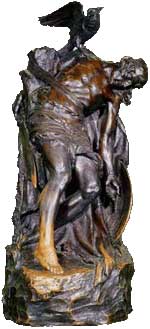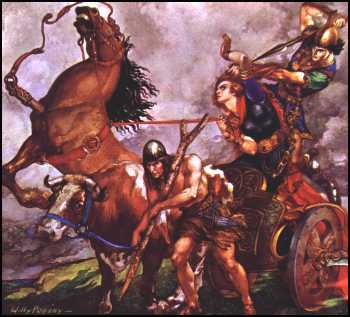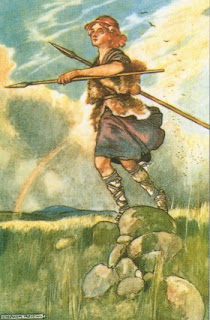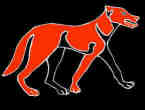 This is from my article in Air n-Aithesc Vol III, Issue 1 currently available in hard-copy or e-copy from this link. Unlike previous excerpts, this in not the beginning of it, as I began with a dream sequence that would be too long for a lead in and I don’t want to post only part of. The article is a continuation of my exploration of the fénnidecht wolf-warrior path, specifically how I follow it as a devotion to the Morrígan and some material on female werewolves, weredogs and dog-heads.
This is from my article in Air n-Aithesc Vol III, Issue 1 currently available in hard-copy or e-copy from this link. Unlike previous excerpts, this in not the beginning of it, as I began with a dream sequence that would be too long for a lead in and I don’t want to post only part of. The article is a continuation of my exploration of the fénnidecht wolf-warrior path, specifically how I follow it as a devotion to the Morrígan and some material on female werewolves, weredogs and dog-heads.
The War Goddess’s Bitch
Wolf-warrior cults are usually attributed to male Gods. The Vedic Indra and Rudra, the Germanic Odin and the Greek Apollo Lykeios have all been associated with wolfish warrior bands.[i] Kershaw states that there are no known Celtic Gods associated with warbands, other than seeing a similarity between Finn and the Fíanna and Rudhra and the Maruts.[ii]Kershaw also mentions McCone’s pairing of Ódinn/Týr and Lug/Núada as teuta/koryos(civilization/warband or wild) God pairings.[iii] Lug is certainly a candidate for such a warrior cults: His relationship to both Cú Chulainn and Finn, adds to this possibility.[iv]While I would not argue against Lug, Finn (as a God, although I tend to focus on his nature as a semi-divine hero) or other Gods as having had such cults, I believe that it is as likely that the Goddesses who fall under the title the Morrígan were also likely to have been the Divine leaders of such cults.
The Morrígan’s interest in Cú Chulainn, the Hound of the Smith, is evident throughout the TBC and related Ulster tales. Some see their relationship as confrontational, often confusing. Epstein has speculated that She may indeed be his patron Deity.[v] Epstein noted that the seemingly adversarial nature of Her relationship with Cú Chulainn can be seen as an effort to strengthen his glory, as I have also explored.[vi] Epstein specifically brought up the similarities between his canine nature, which goes far deeper than just a name, and the Norse ulfheðnar (“wolf coats”) and berserkr (“bear coats”) who followed Odin. She speculated that this might hint at an ecstatic cult dedicated to an Morrígan.[vii]
This ecstatic, shape-shifting nature suggests such a cult as well as the obvious canine connection. Cú Chulainn’s name connects him with canines: he is the Hound, actually acting as Culainn’s guard dog as a boy, to replace the dog he killed.[viii] Yet his form of shape-shifting, his ríastrad (warp spasm), is not decidedly canine. By killing the guard dog and then assuming the dog’s role, Cú Chulainn was transformed completely into a hound not only for his time of service to the Smith but for the rest of his life.[ix]He was always a hound. He was just wilder, more dangerous, rabid, when he transformed and he described himself as having canine fury in Tochmarc Emire.[x]His identity as the Hound was so significant that when St. Patrick conjured Cù Chulainn’s specter in order to convert Lóegaire, the king of Ireland, the specter’s canine nature convinced the king that the specter was truly Cú Chulainn.[xi]
Cú Chulainn’s story gives no indication of him as part of a warband. This lack is likely related to animosity between the church and such warriors they called díberga (marauders, brigands).[xii] It is notable that the ecstatic transformation and the connection to a Deity were revealed at all. When the stories of warbands were finally set down, the Fíanna seem quite divorced from the earlier, negative, accounts of the díberga, that displayed little association with either shape-shifting or Deity.[xiii] The association with hounds is strong in the stories around Finn Mac Cumhail. There are many members of the Fíanna with canine names. However, the fénnidi’s own canine nature is only hinted at vaguely. Finn did have the hood of Crothrainne, which allowed him to turn to hound or stag, yet there is little evidence of him using it.[xiv]In one alternative tale of the birth of Bran, Finn was his father by a woman enchanted into the form of a bitch. One might choose to speculate that he used the hood at that time.[xv]
Read more by purchasing AnA here
[i] Kris Kershaw, The One-eyed God: Odin and the (Indo-) Germanic Männerbünde, Journal of Indo-European Studies, Monograph No. 36., Washington D.C.: Institute for the Study of Man Inc., 2000, such Gods and Their cults are the subject of the entire study, however particular interest might rest in ch. 9 “Odin Analogues” pg. 182-200; Dorcas Brown and David Anthony, “Midwinter Dog Sacrifices at LBA Krasnosamarskoe, Russia And Traces of Initiations for Männerbünde” Paper presented, Conference: Tracing the Indo-European: Origin and migrations. Roots of Europe Research Center, University of Copenhagen, Denmark Dec 11–13, 2012.[ii] Kershaw, The One-eyed God, pg. 186.[iii] Kershaw, The One-eyed God, pg. 195.[iv] C. Lee Vermeers discussed his relationship with Lú Ardáinmór as a lycanthropic God in a blog post http://faoladh.blogspot.com/2013/05/what-i-domy-own-gods-part-one-my-upg-so.html and has also talked about Apollo as a Wind-Wolf God, http://faoladh.blogspot.com/2011/05/gods-and-goddesses-of-werewolves-wind.html[v]Epstein, “War Goddesses,” Ch. 2.[vi]Epstein, “War Goddesses,” Ch. 2; Lambert, “Musings on the Irish War Goddesses;” also further explored in my blog post “The Morrígan and Cú Chulainn part 1: On Saying ‘No.’”[vii]Epstein, “War Goddesses…,” Ch. 3.[viii]TBC Rec 1 pg. 17-19,140-142; TBC:BOL pg. 23-25, 160-163.[ix] McCone, “Aided Cheltchair Maic Uthechair: Hounds, Heroes and Hospitallers in Early Irish Myth and Story.” Ériu 35, 1984 pg. 8-11, I discuss this act as being linked to wolf-warrior initiations in “Going Into Wolf-shape.”[x]Bernhardt-House, Werewolves, Magical Hounds, and Dog-headed Men, pg. 174, 343.[xi]Joseph Falaky Nagy, Conversing with Angels and Ancient: Literary Myths of Medieval Ireland, Ithaca: Cornell University Press, 1997, pg. 274.[xii] Kim McCone, “Werewolves, Cyclopes, Díberga and Fíanna: Juvenile Delinquency in Early Ireland” Cambridge Medieval Celtic Studies, issue 12, 1986, pg. 3-4; Sharpe, “Hiberno-Latin Laicus, Irish Láech and the Devil’s Men,” Ériu 30, 1979, pg. 80-87.[xiii]Kim McCone, “Werewolves, Cyclopes, …”, pg. 3-4; I discuss other links between the díberga and the Fíanna and canine nature further in “Going Into Wolf-shape” as well.[xiv]Kuno Meyer, ed. and trans., “The Finn episode from Gilla in Chomded húa Cormaic’s poem “A Rí richid, réidig dam” Fianaigecht, 1910, Hodges, Figgis & Co., Dublin, Ireland, pg. 51. http://archive.org/details/fianaigechtbeing00meye[xv]As we’ll discuss shortly, Bran and Sceolang are more commonly said to be the children of Finn’s aunt, however, this tale is noted by Bernhardt-House, Werewolves, Magical Hounds, and Dog-headed Men, pg. 196.
Copyright © 2016 Saigh Kym Lambert
Wolf Copyright © 2002 Aaron Miller, based on Newbigging Leslie stone
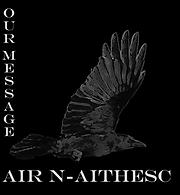
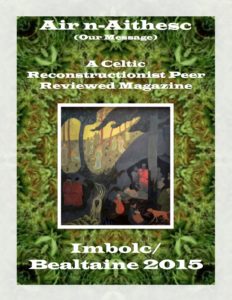
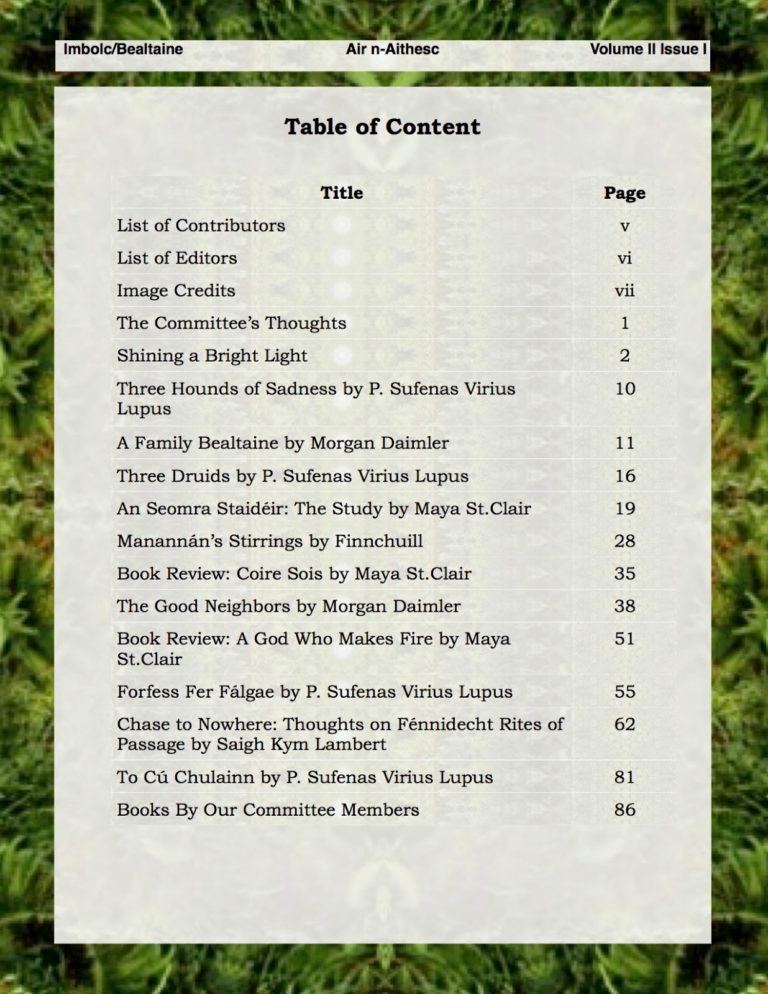
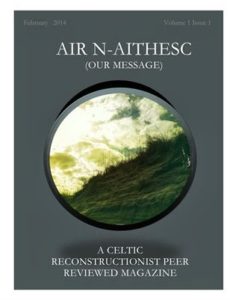
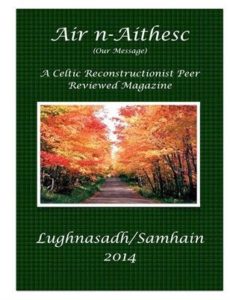
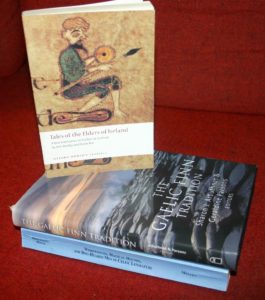 So taking Maya St.Clair’s, who blogs as
So taking Maya St.Clair’s, who blogs as 